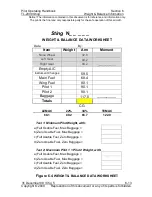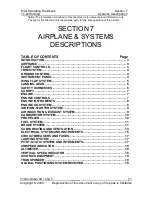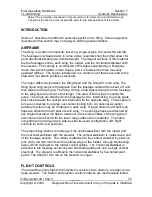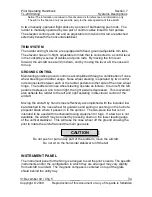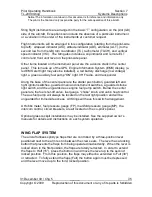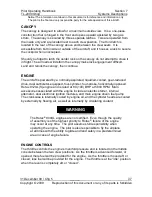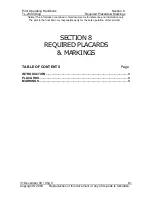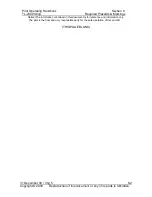
Pilot Operating Handbook
Section 7
TL-2000
Sting
Systems Descriptions
Notice! The information contained in this document is for reference and information only.
The pilot is the final and only responsible party for the safe operation of this aircraft.
31 December 09 / Chg 5
______
7-9
Copyright © 2009 Reproduction of this document or any of its parts is forbidden.
drains into the crankcase. Blow-by pressure from the cylinders in compression
crates a positive pressure in the crankcase which forces the oil back the reservoir,
and the process repeats itself. An over flow line is provided from the reservoir
tank. Refer to Section 9 for checking and servicing the oil.
IGNITION-STARTER SYSTEM
Two electrical ignition modules and two spark plugs per cylinder provide engine
ignition. Each ignition fires the top plugs for one side of the engine and the lower
plugs for the opposite side of the engine.
Two ignition switches are incorporated into the system. They provide a means of
activating and deactivating, or grounding, the two ignition modules. These
switches also assist the pilot in isolating engine deficiencies.
Starter operation is controlled by a momentary-push button. The starter solenoid is
then energized, which in turn activates the starter.
AIR INDUCTION & EXHAUST SYSTEM
Unlike most conventional aircraft, air for induction is not ducted or baffled into each
carburetor. Rather, the engine uses the air flowing around the engine that enters
through two air intakes in the cowling behind the prop. An air filter is attached to
each carburetor where air is drawn into the induction system. After being mixed
with fuel in the carburetors, the fuel/air is then sent through the engine intake
manifolds into the cylinders for combustion. The carburetors are not directly
connected, although there is a small carburetor compensation tube downstream in
the intake system.
The engine can be generally described as two engines sharing one crankshaft.
Therefore, it is important to maintain a good balance between the carburetors for
smooth engine operation.
The exhaust system for the aircraft is made up of exhaust manifolds, a muffler, and
an exhaust pipe. After the cylinders complete the exhaust stroke, the mixture is
expelled through manifolds into a muffler and finally out through an exhaust pipe
that extends downward from the engine cowling out the pilot side.





